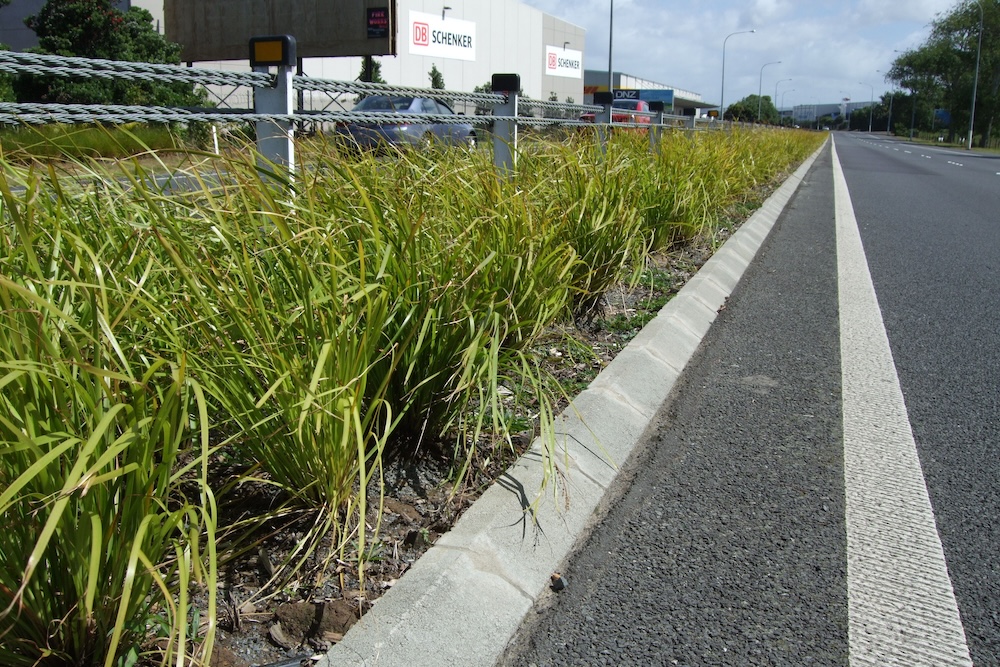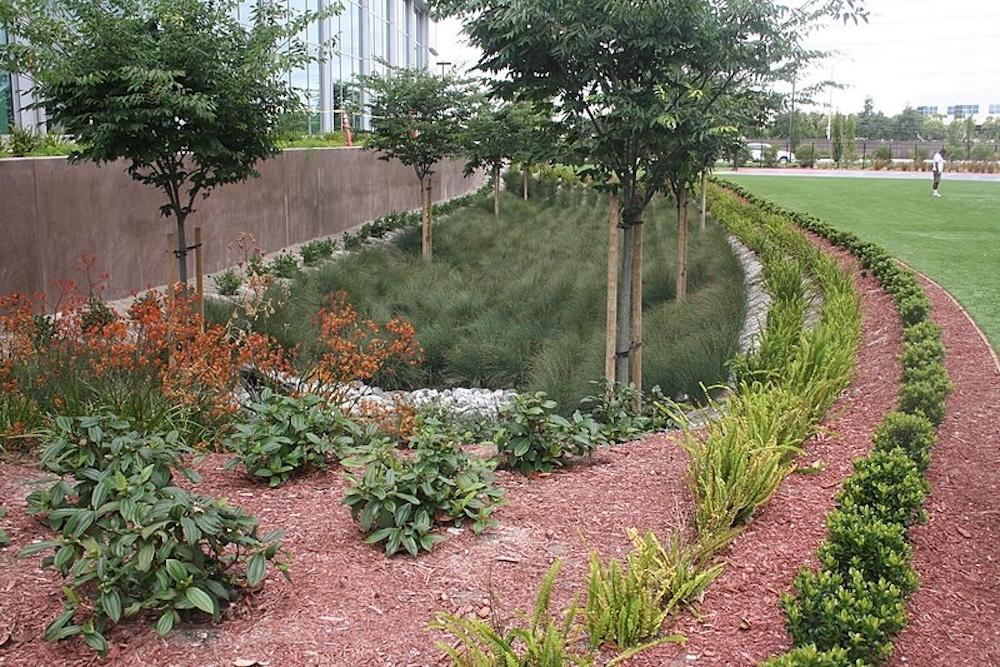Plants, including those in your backyard, can be one of our most effective tools in battling climate change.

Erosion Control Research
What are the best erosion control plants and turf types?
Quantifying the strengthening of soil by commonly used plants and turf.
By Todd Layt and Ian Paananen
- What are the best erosion control plants?
- Which plants and turf strengthen the soil the most?
- Vital information for anyone using plants or turf on slopes, stream banks, roadsides, or anywhere that is prone to erosion
Best soil strengthening plants, based on this investigation. All plants in this list are good at strengthening the soil, with the best ones at the bottom of the table:
| Groups | difference to bare soil | significant? | % increase vs bare soil | Shear Strength kPa |
| Little Rev | 1.39 | YES | 161% | 22.8 |
| Carex appressa | 1.52 | YES | 176% | 23.8 |
| Little Jess | 1.55 | YES | 181% | 24.3 |
| Katrinus | 1.85 | YES | 216% | 26.9 |
| Tasred | 2.15 | YES | 250% | 29.6 |
| Tanika | 2.15 | YES | 250% | 29.5 |
| Agapanthus | 2.43 | YES | 283% | 32 |
| Lucia* | N/A | YES | 433.75% | 49.3 |
| Tropic Cascade* | N/A | YES | 159% | 18.6 |
| Shara* | N/A | YES | 225% | 26.2 |
| Best 6 Plants | ||||
| Katie Belles | 2.45 | YES | 285% | 32.3 |
| Breeze | 2.56 | YES | 297% | 33.2 |
| Nyalla | 2.82 | YES | 328% | 36.1 |
| Katrinus Deluxe | 3.15 | YES | 366% | 39.6 |
| Nafray | 4.08 | YES | 475% | 50.3 |
| King Alfred | 6.46 | YES | 752% | 70 |
- King Alfred is the best Australian erosion control plant.
- Empire Turf is the best erosion control turf.
* Based on separate, more recent test.
Turf shear vane test results and statistics for Clarendon:
| Turf Type | Shear Strength in kPa | Significant difference to bare soil | % increase to bare soil |
| Bare soil | 66 | N/A | N/A |
| Couch | 68.1 | No | 3.2% |
| Kikuyu | 72.4 | No | 9.7% |
| Empire | 97.9 | Yes | 48% |
| Nara* | 105 | Yes | 58% |
*Based on a number of later calculations and shear tests and compared to Empire, then extrapolated into the previous format.
Abstract
Plant roots and rhizomes are known to help strengthen soil, and aid in erosion control. However, until recently very little research has been conducted with regard to which plants strengthen the soil better than others, and the research conducted only focused on a very small sample of plants.
The purposes of this investigation, is to test the influence 31 different commonly used landscape plants, and three commonly used erosion control turf varieties have on soil shear strength.
The varieties were chosen from regularly used erosion control landscape plants and turf types from Australia, however many of these plants and turf types are used in the USA, Europe, and Asia.
Many improved varieties were also included, as they are currently widely used in Australia, and it allowed this investigation to test the improved varieties compared to the common forms from the same genus and species.
Ten large sample pots of each variety were grown and tested with a Shear Vane tester, as were samples grown in two different gardens, and replicated turf plots. 29 shear vane tests were taken for each variety from the pots.
The results showed all plants strengthened the soil compared to the control samples of unvegetated potting mix and soil. Increases in soil shear strength were analysed using an ANOVA test.
Any variety that showed a 95% or more increase in shear strength was found to be significantly different to the unvegetated samples.
King Alfred, an improved variety of Dianella caerulea was found to have more than doubled the soil strengthening ability, compared to all other plants, other than Nafray, which was still well below King Alfred.
King Alfred strengthened the soil 752%, and in this test had an undrained shear strength of 70 kPa, compared to unvegetated soil of 9 kPa. Many other varieties however, still strengthen the soil greatly.
Katrinus Deluxe, a Lomandra longifolia, strengthened the soil by 366%. Some plants that are widely used in the USA and Australia, such as Liriope Evergreen Giant had much lower readings, only strengthening the soil a statistically significant 100%.
Varieties improved through breeding all strengthen the soil considerably more than their corresponding common varieties, providing evidence that plant breeding can lead to plants better suited to strengthening soil.
Empire Zoysia Turf strengthened the soil significantly, at a rate of 97.9 kPA, considerably more than Couch 68.1 kPa (Bermuda grass) and Kikuyu 72.4 kPa.
This data can help Engineers, Landscape Architects, and Erosion Control professionals choose plants and turf that better strengthen the soil, and enhance erosion control of slopes, batters, stream embankments, roadsides, retaining walls, and shore lines.
It will also provide a basis for future plant breeders to develop plants and turf that better strengthen the soil.
Click Here to see our Top 10 Erosion Control Plants for your state
![]()
To read the entire paper, download the pdf.
Quantifying the strengthening of soil by commonly used
landscape plants and turf | 800KB




This Post Has 0 Comments